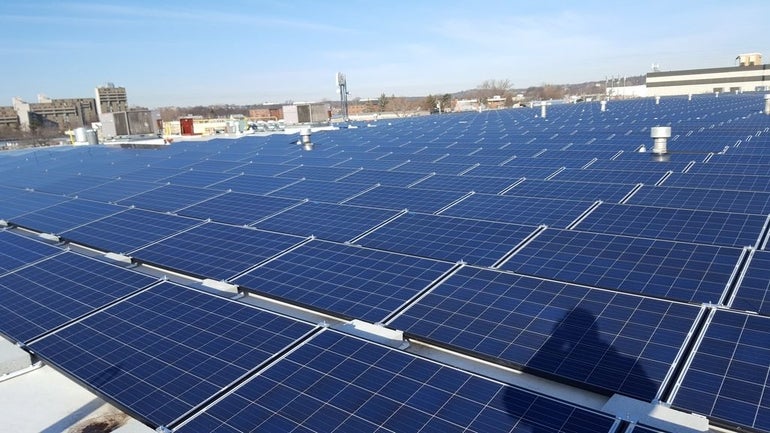Decrying budget cuts and staff reductions at environmental agencies, the Environmental League of Massachusetts on Tuesday renewed its call for greater environmental funding in order to maintain public health initiatives, outdoor recreation, wetland and river restoration, land preservation, and the state’s tourism industry.
The environmental group was joined by lawmakers and other advocates as it rolled out its “green budget,” requesting spending increases that they say will put the state on track to dedicate 1 percent of its operating budget to environmental agencies, a goal Gov. Charlie Baker committed to as a candidate.
“Our goal for the state operating budget is to dedicate one cent of every dollar to environmental agencies. Right now we’re only investing about half of a penny of every state operating dollar,” Erica Mattison, legislative director for ELM, said. “Back in the early 2000s it was one percent and we’ve been working for years to get back to that level of investment but the problem is it keeps dropping.”
Baker spokesman Billy Pitman said Tuesday the administration is committed to environmental protection but did not directly answer when asked if the governor stands by his 2014 campaign promise to devote 1 percent of the budget to environmental agencies by the end of his four-year term.
As passed by the Legislature, the current budget funds environmental agencies to the tune of $219,447,577, representing 0.56 percent of the $39.25 billion state operating budget. Gov. Charlie Baker’s fiscal 2018 budget proposal would drop environmental agency funding — as defined by ELM — to $218,019,699, which would equate to roughly 0.53 percent of the operating budget, according to ELM.
In tallying the total share of budget spending dedicated to environmental programs, ELM counts appropriations for the Department of Agricultural Resources, Department of Conservation and Recreation, Department of Environmental Protection, Department of Fish and Game, and the Office of the Secretary of Energy and Environmental Affairs.
Baker’s office noted that the governor’s fiscal 2018 budget proposal also includes $18.3 million for the Department of Energy Resources and the Department of Public Utilities, and that the $236,377,498 Baker proposed for the full suite of environmental and energy agencies in fiscal 2018 represents a slight increase over the total amount approved by the Legislature for fiscal 2017.
ELM’s “green budget” request would boost total environmental spending by at least $148 million, according to data provided by ELM. The goal, Mattison said, is to achieve a 0.2 percent increase in fiscal 2018 and another 0.2 percent increase the following year to bring the state within striking distance of the full 1 percent.
Members of ELM said that increase would put the budget on track to align with a commitment Baker has made to bring environmental funding up to 1 percent of spending by the end of his four-year term.
At an October 2014 forum ahead of his election as governor, Baker said he could “promise you” he would restore state environmental funding to 1 percent of the budget “over the course of my administration.”
The last time the state appropriated at least 1 percent of the operating budget to environmental agencies was fiscal 2001, when environmental funding accounted for $225.3 million of the $22.4 billion budget, according to ELM.
Though ELM repeatedly pointed out that Baker has so far not lived up to his word that he would dedicate 1 percent of the budget to environmental programs, Mattison said the green budget is also “a path for the Legislature,” which shares budgeting responsibilities with the governor.
Legislative supporters including Sens. Marc Pacheco and Anne Gobi, and Reps. Paul Schmid and Jonathan Hecht got behind the 1 percent goal Tuesday, saying the funding leads to a better quality of life in their districts.
“It’s far from an arbitrary number. For me, the spending on the environment means the keeping up the Freetown-Fall River State Park and Horseneck Beach in my district,” Schmid, who last session served as House chair of the Committee on Environment, Natural Resources and Agriculture, said. “For me, funding environmental issues means funding DEP … at a time when who knows what the (federal Environmental Protection Agency) is going to be doing.”
The 1 percent target does not represent the full scope of the environmental need, ELM President George Bachrach said, but serves as an easy-to-understand and attainable goal.
“First, it’s a meaningful step forward, albeit still not enough, and second, because it dramatically underscores how amazingly underfunded environmental protection is in ‘progressive’ MA,” Bachrach said in an email.
ELM also touted the economic benefits of environmental spending, highlighting the state’s 135,000 tourism jobs, 61,000 agricultural jobs, and more than 100,000 clean energy jobs. The 28 million visitors to Massachusetts last year generated an estimated $1.3 billion in state and local taxes, Tedd Saunders, chief sustainability officer for the Saunders Hotel Group, said, many of them drawn by the state’s environmental offerings.
“If we take all of this for granted and don’t invest in protecting our beaches, our rivers, our parks and campgrounds, our seafood and our bird life … visitors will go elsewhere and we will have squandered this huge revenue generator while also undermining the quality of life and health benefits for all of our residents,” Saunders said.
Midway through his four-year term, Baker has sharply reduced the state’s use of one-time revenues to balance the state budget and opposed new or higher taxes. The governor’s latest budget seeks to address a surge in MassHealth expenses associated with enrollment increases in that massive program.

